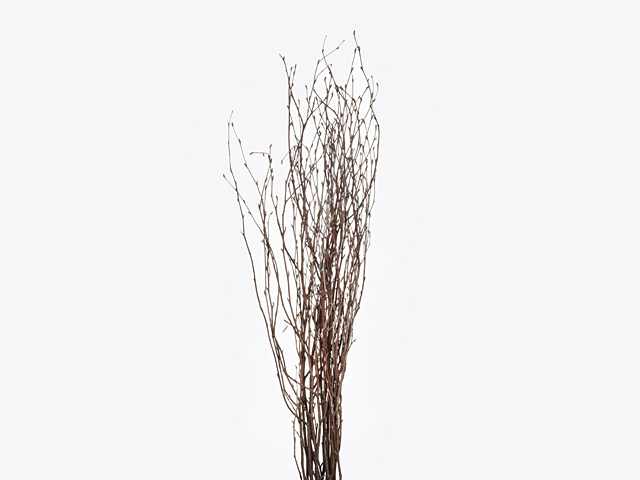Betula per bunch

Betula, commonly known as Birch, is a genus of deciduous trees that belongs to the family Betulaceae. It is a well-known and widely distributed tree species, present in North America, Europe, and Asia. The name "Betula" is derived from the Latin word for "birch."
Birch trees are highly recognizable due to their distinctive bark, which peels off in papery sheets, revealing a beautiful smooth surface underneath. The bark comes in various shades of white, gray, silver, or even black, depending on the species. This unique feature adds to the aesthetic appeal of these trees, making them a popular choice for landscaping.
The leaves of birch trees are simple, alternate, and serrated-edge, with a bright green color. In the fall, they turn vibrant shades of yellow, gold, or orange, creating a breathtaking display. The leaves are also known to flutter and rustle in the wind, giving birch trees a lively and dynamic presence.
Aside from their visual appeal, birch trees also have various practical uses. In many cultures, the bark of the birch tree has been used for centuries for its medicinal properties. It contains compounds that have anti-inflammatory, antiseptic, and analgesic properties. The bark is often used to make teas, tinctures, and poultices to treat various ailments like arthritis, eczema, and urinary tract infections.
Another useful aspect of birch trees is their wood. Birch wood is favored for its durability, strength, and attractive light color. It is often used in the construction of furniture, cabinetry, flooring, and plywood. The wood is also popular among woodworkers and craftsmen due to its ease of carving and beautiful grain patterns.
Birch trees provide more than just practical benefits; they also play a crucial role in the environment. Like other trees, they absorb carbon dioxide and release oxygen through photosynthesis, helping to combat climate change. Their extensive root systems help to stabilize soil and prevent erosion. Birch trees also provide habitat and food for various wildlife species.
In addition to their ecological importance, birch trees have cultural significance in different societies. For example, in many Native American traditions, birch bark was used to make canoes, containers, and even shelters. The Inuit people of Alaska traditionally crafted intricate baskets and containers from birch bark, showcasing their exceptional craftsmanship.
Whether admired for their elegant appearance, valued for their medicinal properties, or utilized for their practical applications, birch trees have unquestionably made a significant impact on human societies throughout history. Their ability to thrive in various climates and their numerous benefits make them truly remarkable trees. Next time you spot a birch tree, take a moment to appreciate its beauty and the contributions it makes to our lives and the world around us.
Market availability index by month:
| Jan. | Feb. | Mar. | Apr. | May | Jun. | Jul. | Aug. | Sep. | Oct. | Nov. | Dec. |
|---|---|---|---|---|---|---|---|---|---|---|---|
| 4 | 4 | 3 | 3 | 4 | 3 | 3 | 3 | 3 | 3 | 3 | 3 |